Who is Buried in the Vilna Gaon’s Tomb? A Contribution Toward the Identification of the Authentic Grave of the Vilna Gaon
Who is Buried in the Vilna Gaon’s Tomb?
A Contribution Toward the Identification of the Authentic Grave of the Vilna Gaon
by
Shnayer Leiman
1. Prologue
This essay attempts to identify the authentic grave of the Vilna Gaon (d. 1797).1 As will become apparent, it surely is not the grave that Jewish pilgrims are shown today when they visit Vilna. We shall attempt to identify his authentic grave by applying the biblical rule: על פי שני עדים יקום דבר “a matter is established by the testimony of two witnesses.” We shall cite two different kinds of witnesses. One witness will represent primarily תורה שבכתב, i.e., literary evidence. The other witness will represent primarily תורה שבעל פה , i.e., oral history.
2. Introduction
Three Jewish cemeteries have served the Vilna Jewish community throughout its long history. The first Jewish cemetery, often called by its Yiddish name der alter feld (Hebrew: בית עולם הישן), was north of the early modern Jewish Ghetto of Vilna, and just north of the Vilia River (today called the Neris) in the town of Shnipishok. It served as the main Jewish cemetery until 1830, when, due to lack of space, it was closed by the municipal authorities. The following photograph, taken in 1912, presents an aerial view of the first Jewish cemetery, looking north from Castle Hill in the old city. One can see the Neris River flowing south of the cemetery; portions of the fence surrounding the cemetery; and the house of the Jewish caretaker of the cemetery near the north-western entrance to the cemetery. (Each of the following images may be enlarged and viewed in higher resolution by clicking on them.)
Such famous rabbis as R. Moshe Rivkes (d. 1671), author of באר הגולה, and R. Avraham Danzig (d. 1820), author of חיי אדם, were buried in der alter feld. See the following photograph for the grave of the חיי אדם in the old cemetery.
The second Jewish cemetery, in use from 1831 until 1941, was east of Vilna proper, on a mountain overlooking the nearby neighborhood called Zaretcha. Here were buried famous Maskilim such as Adam Ha-Kohen Lebensohn (d. 1878), and famous rabbinic scholars such as R. Shmuel Strashun (d. 1872), R. Avraham Avele Pasvaler (d. 1836), R. Shlomo Ha-Kohen (d. 1906), and R. Hayyim Ozer Grodzenski (d. 1940). With 70,000 graves in place in 1940, the second cemetery ran out of space, and a third Jewish cemetery was acquired and dedicated by the Vilna Jewish community shortly before the outbreak of World War II. It lies north-west of central Vilna, in Saltonishkiu in the Sheshkines region, and is still in use today by the Jewish community in Vilna.
The Vilna Gaon, who died in 1797, was, of course, buried in the first Jewish cemetery. That cemetery was destroyed in the Stalinist period circa 1950, but just before it was destroyed we are informed by the sources that the Gaon was moved, perhaps temporarily to the second cemetery,2 but certainly to the third cemetery, where he rests today.
Let us enter the third cemetery and stand before the Ohel ha-Gra.
It is a modest and narrow Ohel. When one enters the Ohel, one sees seven graves laid out from left to right, with five tombstones embedded in the wall at the heads of the graves.
The tour guides inform the visitors that the Gaon is buried in the fourth grave from the left. Indeed, directly above his grave, embedded in the wall, is a tombstone that clearly identifies the grave as that of the Gaon. One wonders who else is buried in the Ohel. The narrow confines of the Ohel, and the poor lighting in the Ohel, make it almost impossible to read the tombstones. One American publication identifies the others as R. Shlomo Zalman, the father of the Gra (d. 1758); R. Avraham, the son of the Gra (d. 1809); R. Yehoshua Heschel, Chief Rabbi of Vilna (d. 1749); R. Shmuel b. Avigdor, last Chief Rabbi of Vilna (d.1793); R. Avraham Danzig, author of חיי אדם; and Avraham b. Avraham, the legendary Ger Zedek of Vilna. Another American publication presents a different list that includes R. Moshe Rivkes, author of the באר הגולה , and Traina, the mother of the Gaon. In Israel, several published lists know for a fact that R. Shmuel Strashun was moved together with the Gaon, and now rests in the new Ohel. All these accounts are imaginary.3
When one reads the accounts of the reinterment of the Gaon, and of those buried in his Ohel today, it becomes apparent than more than bodies were moved. Wherever possible, the original tombstones were moved together with the dead and then reset at the head of the graves. All one has to do is read the tombstone inscriptions in order to identify who was moved. Reading from left to right, buried in the Ohel ha-Gra are:
1. R. Zvi Hirsch Pesseles (d. 1817). A relative of the Gaon, whose grandfather, R. Eliyah Pesseles (d. 1771), helped finance the Gaon’s study activity.
2. R. Yissachar Baer b. R. Shlomo Zalman (d. 1807). A younger brother of the Gaon, he was a master of rabbinic literature who was also adept in the exact sciences.
3. R. Noah Mindes Lipshutz (d. 1797). Distinguished Kabbalist, he was the author of פרפראות לחכמה and נפלאות חדשות. He married Minda (hence: Mindes), the daughter of R. Eliyahu Pesseles, mentioned above (grave 1). A close associate of the Gaon during his lifetime, he and the Gaon share a single tombstone in death.
4. The Gaon.
5. Minda Lipshutz (date of death unknown). She was the daughter of R. Eliyah Pesseles and the wife of R. Noah Mindes Lipshutz.
6. Devorah Pesseles (date of death unknown). She was the wife of R. Dov Baer Pesseles, a son of R. Eliyahu Pesseles, and the mother of R. Zvi Hirsch Pesseles (grave 1).
The seventh grave is unmarked, that is, it is without a tombstone. The tour guides will tell you that it contains the ashes of Avraham b. Avraham, the legendary Ger Zedek of Vilna.4
A pattern emerges. Clearly, the original plot in the Shnipishok cemetery belonged to the Pesseles family, one of the wealthiest and most distinguished in Vilna. The Gaon found his resting place here due to the generosity of his relatives and friends in the Pesseles family. More importantly, when a hard decision had to be made in 1950 or so regarding who should be moved from the old cemetery in Shnipishok, it was not the greatest rabbis who were moved and reinterred. It was neither R. Moshe Rivkes, nor R. Yehoshua Heschel, nor R. Shmuel b. Avigdor, nor R. Avraham Danzig, nor R. Shmuel Strashun. Nor was it the Gaon’s father, mother, or son. It was the Gaon and the persons to his immediate right and left; the Gaon saved not only himself, but also those buried in proximity to him.
3. The Problem
While the identification seems reasonable, the ordering of the graves is problematic. Anyone familiar with traditional Jewish cemeteries will know that some keep men and women separate, while others are mixed. Clearly, the old Jewish cemetery in Shnipishok was mixed. But even when mixed, husbands and wives tended to be buried next to each other. So too mothers and sons. Yet in the Ohel ha-Gra, R. Zvi Hirsch Pesseles is buried at the extreme left, whereas his mother Devora is buried at the extreme right. Neither is buried next to his or her spouse. Even more puzzling is the fact that the Gaon rests in between Rabbi Noah Mindes Lipshutz and his wife Minda Lipshutz. Now it may be that Rabbi and Mrs. Lipshutz were not on speaking terms, but this was hardly the way to decide where the Gaon should be buried.
The problem assumes prodigious proportions when we examine Israel Klausner’s קורות בית-העולמין הישן בוילנה, published in Vilna in 1935. Klausner visited the Shnipishok Jewish cemetery, recorded some of the tombstone inscriptions of its most famous rabbis and, more importantly, drew a precise map of the location of each grave. It is important to note his orientation, as he drew the map. Klausner stood at the northern entrance to the Jewish cemetery, looking southward toward the Vilia River. See the depiction of the Ohel ha-Gra in Klausner’s map.
The graves in the Ohel ha-Gra, from left to right, are numbered 20-27. Some of those numbers represent two graves of persons buried immediately next to each other. Klausner, in his narrative, identifies the occupants of graves 20-27 as follows:
20. a) ר’ שלמה זלמן אבי הגר”א
b) ר’ אליהו שתדלן
21. a) ר’ יהודה ב”ר אליעזר (יסו”ד)
b) חיה אשת ר’ יהודה ב”ר אליעזר (יסו”ד)
22. ר’ צבי הירש פעסעלעס
23. דבורה פעסעלעס
24. מינדה פעסעלעס ליפשיץ
25. a) ר’ נח מינדעס ליפשיץ
b) הגר”א
26. ר’ ישכר בער אחי הגר”א
27. ר’ יהושע העשיל ב”ר שאול
This, then, is a complete list of all those who were buried in the original Ohel ha-Gra in the old Jewish cemetery. That Klausner has the order perfectly right can be seen from the following photograph.
Notice the inscription פ”נ הגאון רבינו אליהו in the center of the photograph, near the roof-top of the Ohel. Turning to the extreme left of the Ohel, where the roof slopes down almost to the ground, one can see two grave markers above a single tombstone.
When enlarged, the inscriptions above the tombstone clearly read (from left to right): פ”נ אבי הגר”א and ר’ אליהו שתדלן, exactly in the order recorded by Klausner (see above, grave number 20). When we compare Klausner’s list with the present occupants of the Ohel ha-Gra, it becomes clear that those who moved the Gra from the first to the third cemetery, moved the graves numbered 22-26, a total of six persons altogether, from the original Ohel ha-Gra. The seventh grave, unmarked, remains unidentified and could have come from any part of the old cemetery, and not necessarily from the Ohel ha-Gra.
When we enter the Ohel ha-Gra today, we need to bear in mind that we are entering from the south and looking north. We see the mirror image of what Klausner depicted on his map. Thus the expected order today should be:
The expected order solves all our problems. On the extreme right, Devorah and her son R. Zvi Hirsch are buried next to each other. In the center, R. Noah and his wife Minda are buried next to each other. And the Gra is second from the left. It is the actual order that creates our problem. Devorah and R. Zvi Hirsch are separated; neither is buried next to his or her spouse. The Gra is buried in between R. Noah Lipshutz and his wife Minda. אין זה אומר אלא דרשני.
One more piece of evidence needs to be introduced before we attempt to solve the problem. Israel Cohen, British Zionist and world traveler, visited Vilna twice before World War II. Regarding the Shnipishok cemetery, he records the following: Most famous of all is the tomb of the Gaon Elijah, who lies in the company of a few other pietists on a spot covered by a modest mausoleum which is entered by an iron-barred door.
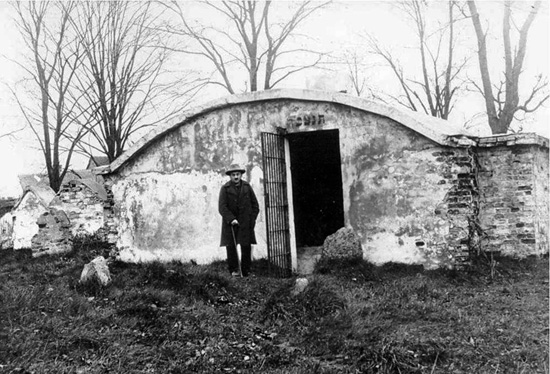 The tombstones, with long eulogistic epitaphs, are not enclosed within the mausoleum, but stand at the back of it, in close juxtaposition and closely protected by a thick growth of shrubs and bushes.
The tombstones, with long eulogistic epitaphs, are not enclosed within the mausoleum, but stand at the back of it, in close juxtaposition and closely protected by a thick growth of shrubs and bushes.Israel Cohen, Vilna (Philadelphia, 1943), pp. 415-416. Cf. his Travels in Jewry (New York, 1953), pp. 149-150.
4. The Solution
It seems obvious that those who moved the Gaon to the new Jewish cemetery made one slight adjustment relating to the ordering of the graves. They moved R. Zvi Hirsch from the extreme right to the extreme left. We will never know with certainty why they did so. What was gained, perhaps, is that now all the males were together on the left, and all the females were together on the right. By moving R. Zvi Hirsch to the extreme left, the Gra was now the third grave from the left. But the actual order today appears to have the Gra as the fourth grave from the left, and buried in between R. Noah and his wife Minda.
We need to remember that in the old Jewish cemetery the tombstones were outside the Ohel ha-Gra, each tombstone opposite the remains of the person it described, with text of the tombstone facing in a northerly direction. Indeed, every tombstone in the old Jewish cemetery was placed opposite the remains of the person it described, with the text of the tombstone facing in a northerly direction.
We also need to remember that the Gra and R. Noah shared one tombstone.5
The Gra’s epitaph was on the right side of the tombstone; R. Noah’s epitaph was on the left side of the tombstone. This was in perfect order, since inside the Ohel, the Gra was to the left of R. Noah, and R. Noah was to the left of, and next to, his wife Minda. In the new Jewish cemetery, the six graves were laid out exactly as in the old cemetery, with the exception of R. Zvi Hirsch as indicated. But it was decided to place the original tombstones inside the Ohel, at the head of each of the graves. Instead of facing in a northerly direction, with texts that could be read only by standing outside the Ohel, the tombstones, now reversed, faced in a southerly direction, with texts that could be read only when standing inside the Ohel. Doubtless, this was done in order to protect the historic tombstones from exposure to the elements, from deterioration, and from vandalism. Also, the tombstones now immediately identified who was buried in each grave. Unfortunately, when the single tombstone shared by the Gra and R. Noah was reversed and set up inside the Ohel, it automatically (and wrongly) identified the third grave from the left as R. Noah, and the fourth grave from the left as the Gra, and caused a split between R. Noah and his wife. In fact, the Gra is the third grave from the left, and R. Noah is the fourth grave from the left – and R. Noah is properly buried next to his wife Minda. In other words, all Jews who visit the grave of the Gra today, pray, and leave qvitlach, at the wrong grave (i.e., at the grave of R. Noah Mindes Lipshutz).
The above solution was based upon an examination of the literary evidence, and upon an examination of photographs preserved mostly in books. I call this עד אחד (one witness), that is, the testimony of תורה שבכתב (i.e., the literary evidence). But a matter established by only one witness is precarious at best.6 Intuitively I was persuaded by the one witness, but hesitated to put the solution in print until more evidence was forthcoming. Fortunately, a surprise second witness has come forward בבחינת תורה שבעל פה (i.e., oral history). Rabbi Yitzhak Zilber (d. 2003) was a courageous Jew who lived most of his life under Soviet repression between the years 1917 and 1972, before ultimately settling in Israel. He published a riveting autobiography in Russian in 2003. It has since been translated into Hebrew and English. In his autobiography, Zilber describes how in 1970, under Communist rule, he visited the Ohel ha-Gra in Vilna. The Jew who took him to the Ohel had participated in the transfer of the Gra from the first Jewish cemetery in Shnipishok to the third Jewish cemetery in Saltonishkiu. As they stood before the Gaon’s grave, the Jew turned to Zilber and said:7
Remember the following forever: the Gaon’s tombstone is above the
fourth grave from the left, but the Gaon’s body is in the third grave [from
the left].
על פי שני עדים יקום דבר! “A matter is established by the testimony of two witnesses.”
NOTES
This essay should not be confused with an earlier essay of mine with a similar title, “Who is Buried in the Vilna Gaon’s Tomb? A Mysterious Tale with Seven Plots,” Jewish Action, Winter 1998, pp. 36-41. The primary focus of the earlier essay was on the identification of the six persons buried together with the Vilna Gaon in his mausoleum (the Ohel Ha-Gra). The primary focus of this essay is on the identification of the grave of the Vilna Gaon himself. A version of this essay was read at a conference in honor of Professor Daniel Sperber, held at Bar-Ilan University on June 13, 2011. It is presented here in honor of the Vilna Gaon’s 215th yahrzeit on 19 Tishre, 5773.
The claim that the Vilna Gaon was moved temporarily from the first to the second Jewish cemetery appears, among many other places,
in Y. Alfasi, ed., וילנא ירושלים דליטא חרבה (Tel-Aviv, 1993), p. 9; Y. Epstein, “,דער יידישער בית-עולם אין ווילנע” ירושלים דליטא, October-November 1996, pp. 5-6; and N.N. Shneidman, Jerusalem of Lithuania (Oakville, Ontario, 1998), p. 161. An examination of eye-witness accounts of the reburial of the Gaon, and of much other evidence, yields the ineluctable conclusion that the Gaon was moved only once, directly from the first to the third Jewish cemetery.
See the references cited in the Jewish Action essay (above, note 1).
So reads the Hebrew sign above the entrance to the Ohel Ha-Gra. But the Ohel Ha-Gra was constructed over a three-year period between 1956 and 1958. I cannot say with certainty when the sign first went up, but logic dictates it did not go up before there was an Ohel. In all the early photographs of the Ohel I have seen, there was no sign at all. It surely wasn’t there during the period of Soviet domination of Lithuania, which means it first when up sometime after 1991. As such, it is hardly evidence for who is buried in the Ohel Ha-Gra. More importantly, one of the participants in the reinterment of the Vilna Gaon testified that he and his colleagues wanted to move the remains of Avraham ben Avraham, the Ger Zedek of Vilna, but could not locate his ashes in the old Jewish cemetery. See R.Yitzchak Zilber, To Remain a Jew (Jerusalem, 2010), pp. 389-390.
For side by side transcriptions of the epitaphs on their tombstone, in clear Hebrew font, see R. Noah Mindes Lipshutz, פרפראות לחכמה (Brooklyn, 1995), p. 17.
I was plagued by the remote possibility that the movers, precisely because the shared tombstone required the Gaon to be to the right of R. Noah, switched the remains of the Gaon and R. Noah, and deliberately buried the Gaon in between Minda and R. Noah. (I considered this a remote possibility, because it is highly unlikely that any rabbi would allow such tampering with who was buried to the immediate left and right of the Gaon. As is well known, R. Hayyim Zvi Shifrin [d. 1952] presided over the reinterment of the Gaon. See R. Yaakov Shifrin, קול יעקב [Jerusalem, 1981], pp. 26-30.) If so, all the tombstones are accurately positioned in the Ohel Ha-Gra, even today. Cf. my deliberations in American Jewish Monitor , October 24, 2003, p. 18.
R. Yitzchak Zilber, op. cit. (above, note 4), p. 389.
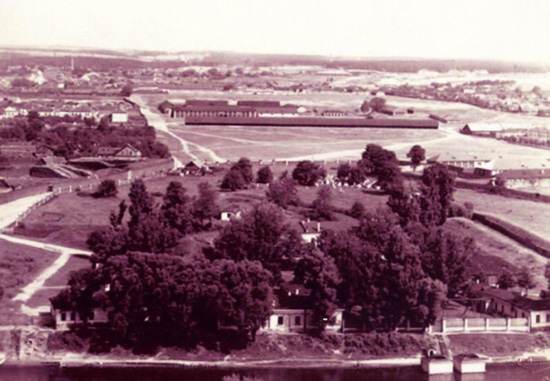
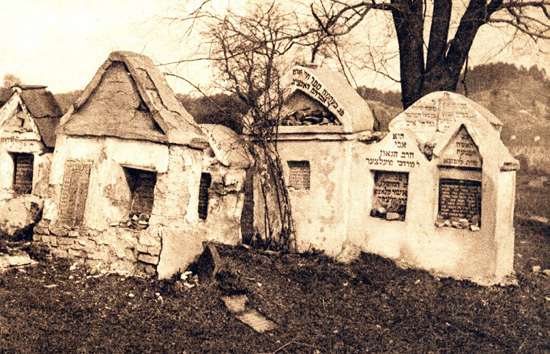
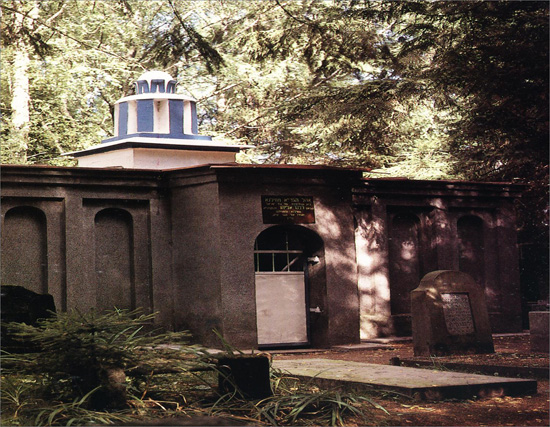
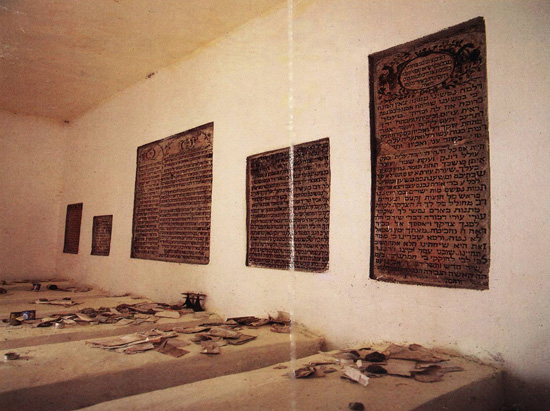
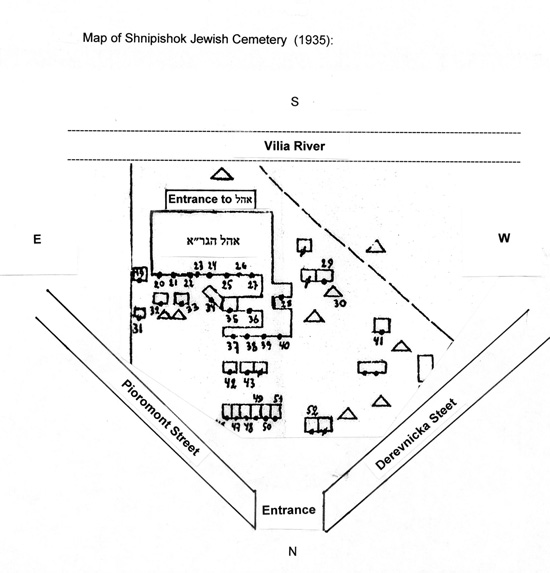
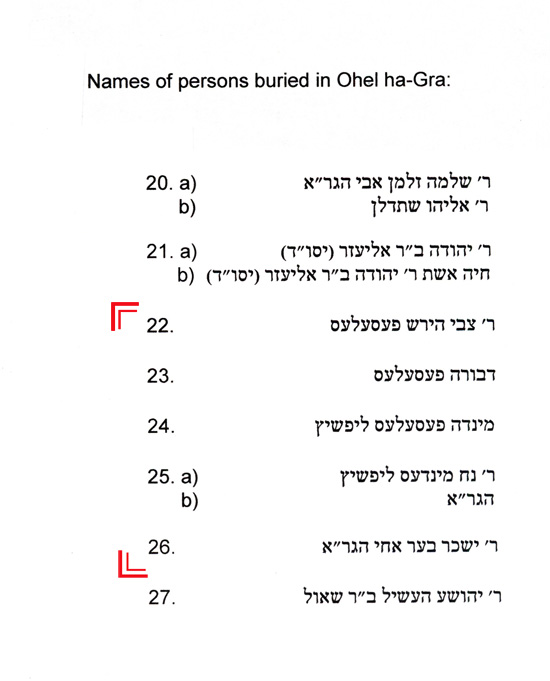
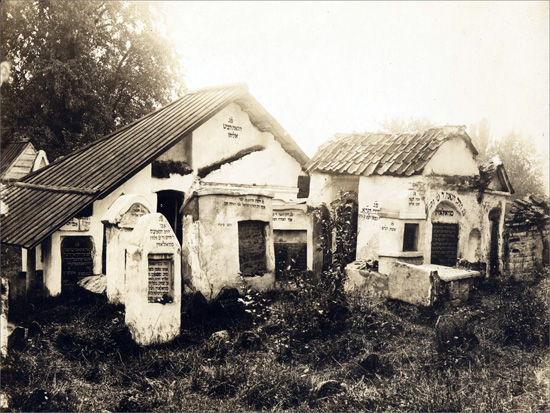
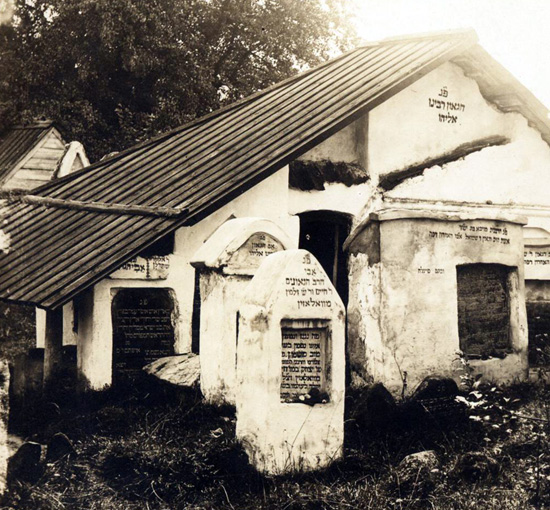
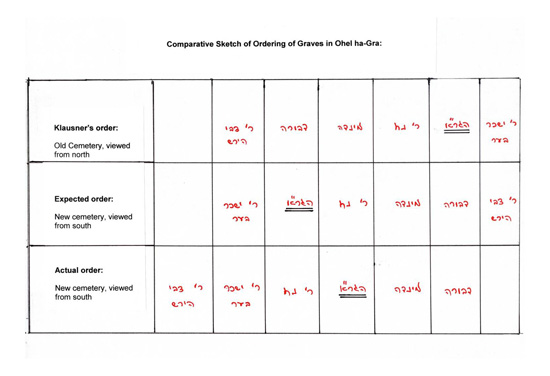
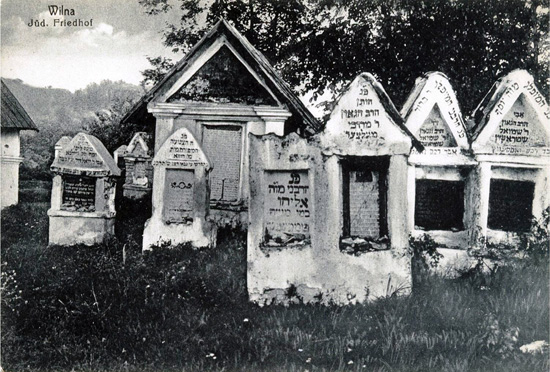
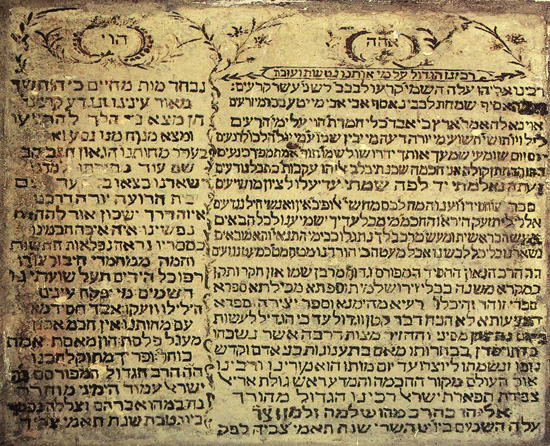
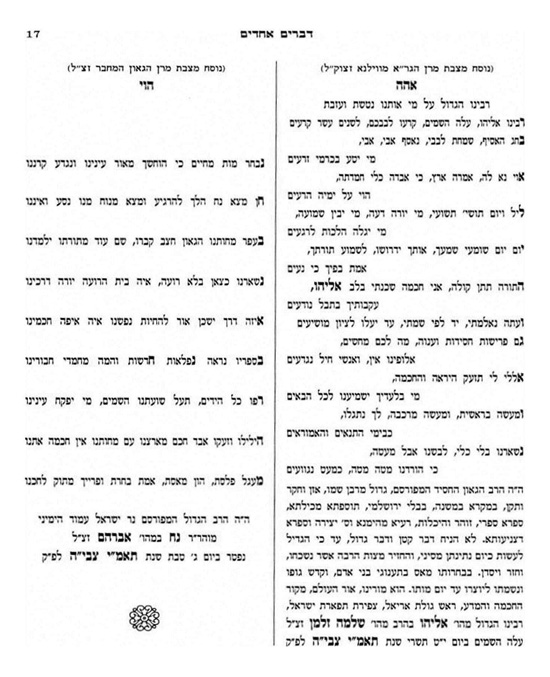



36 thoughts on “Who is Buried in the Vilna Gaon’s Tomb? A Contribution Toward the Identification of the Authentic Grave of the Vilna Gaon”
<span><span>Leor</span></span>
<span><span></span></span>
<span><span></span></span><span>Great Post!</span>
It was this essay from Jewish Action that first got me hooked on Rabbi Leiman.
There is a well known legend surrounding the reinterment of the Vilna Gaon relating to the non-decayed state of his remains at that time and the dire consequence of anyone who cast a glance at said remains. Perhaps the good professor can enlighten us with pertinent details he may have uncovered in the course of his research on this matter.
I have searched for this without success. Has anyone come across anything documenting this?
Interesting as always. Thanks.
The reinterment of the GRA was described to Rav Y.Z. Gustman ZTs"l in NYC sometime in 1953 when one of the 4 Avrechim who participated (all of them sadly died within that year) came to NYC. I heard this personally from the Rosh Yeshiva when I learned in Netzach Yisrael in the early 80's.
Later I became a neighbor in Israel with Rav Leibel Shifrin of Vilna/N.J. who told me the identical story and gave me the memorial Sefer "Kol Yaakov" he printed about his brother Rav Yaakov Shifrin who tragically died shortly after on the 7 of Nissan 5713. Rav Yaakov Shifrin was Rav in Vilna after Rav Gustman and he personally directed the reinterment of the GRA ater conferring with his Rav, Rav E.M Bloch in Cleveland.
Rav Leibel's account is found in Sefer Kol Yaakov (Jerusalem 1981) page 28 of the introduction and it seems that he also took details from an article in Tag Morgen Journal by Dr. Haim Shatzkes 20/6/1960.
Yaakov Rosenes
Great tips out of Phillip. I like the purpose he earned in relation to as an professional inside
of a particular place. It can be did wonders in my opinion.
I’m at this time unemployed, nevertheless collecting
an affordable number of contract work. Thanks for placing the job interview.
Joost is one of the greatest on the subject of SEO/Wordpress.
My web-site : Treatment Of Genital Warts
You really help it become search quite simple along with your demonstration, however I 'm locating this particular subject to get in fact something which I experience I might by no means recognize. This indicates as well difficult and very extensive in my opinion. I’m looking send on your next weblog, Let me attempt to receive the suspend from it!
Also visit my site … Treatment For Genital Warts
Superior test Thomas. Check with most of your friends that like devices.
I’m guaranteed they are able to support.
Also visit my blog – Cheapest auto Insurance
UbcNwx [url=http://onnrainnmcm.com/#40061]MCM 財布[/url] LxeVjw http://onnrainnmcm.com/ ZraYma [url=http://mcmsenmon.com/#55521]MCM バッグ[/url] EaeEuk http://mcmsenmon.com/ HziRgd [url=http://ninnkimcm.com/#98511]MCM リュック[/url] LucTcl http://ninnkimcm.com/ YvxHuy [url=http://kaidokumcm.com/#09606]MCM バッグ[/url] FivGph http://kaidokumcm.com/ EhuVrm [url=http://manzokumcm.com/#54433]MCM バッグ[/url] JfeVak http://manzokumcm.com/ EgvVoo http://chloenihon.com/ YiyFzl [url=http://chloenihon.com/]クロエ キーケース[/url] WkfWjd http://louboutindendou.com/ OalZpk [url=http://louboutindendou.com/]クリスチャンルブタン[/url] SypSez http://guccisenmon.com/ RsaJnn [url=http://guccisenmon.com/]グッチ 財布[/url] BxfLvt [url=http://mcmhannbai.com/]MCM バッグ[/url] OjlDhh [url=http://mcmhannbai.com/]MCM 韓国[/url]
Brokersring.com – Learn how to turn $500 into $5,000 in a month!
[url=http://www.brokersring.com/]Make Money Online[/url] – The Secret Reveled with Binary Option
Binary Options is the way to [url=http://www.brokersring.com/]make money[/url] securely online
Great goods from you, man. I've understand your stuff previous to and you're just extremely fantastic.
I actually like what you've acquired here, certainly like what you are saying and the way in which you say it. You make it entertaining and you still take care of to keep it sensible. I can't wait to
read much more from you. This is really a great website.
My web site http://www.youtube.com/watch?v=caSEY6ykNKw
Aw, this was a very good post. Finding the time and actual effort
to create a good article… but what can I say… I procrastinate a whole lot and don't manage to get anything done.
personal loans for debt consolidation
The event from Vimax fares each move with photos and video recordings so that you
can not go amiss and do Jelqs in the most exact
manner. This form of drugs can be safely as men does.
.. and in that location s nothing comparable a large Penis Enorotundment Oil when
you want stimulus. At least for how males perceive vast tits and vast butts.
Review my web page click here to investigate
people a lot of time simply disk drive now there and additionally look ahead to sales person to express to a person the specialised data for one netbook,
bookmarked!!, I like your web site!
I needed to thank you for this fantastic read!! I certainly loved every little bit of it. I have got you saved as a favorite to check out new things you post…
Do you believe in your past lives? Do you think is reincarnation real?
This is a topic which is near to my heart… Thank you! Exactly where are your contact details though?
Right here is the perfect website for anybody who wishes to understand this topic. You know so much its almost hard to argue with you (not that I personally will need to…HaHa). You definitely put a new spin on a subject that’s been discussed for many years. Wonderful stuff, just excellent.
Everything is very open with a clear explanation of the challenges. It was really informative. Your website is useful. Thanks for sharing!
site : https://www.wooricasinokorea.com 바카라주소
Next time I read a blog, I hope that it does not fail me just as much as this particular one. I mean, Yes, it was my choice to read through, but I truly thought you’d have something interesting to talk about. All I hear is a bunch of whining about something that you could possibly fix if you weren’t too busy seeking attention.
win money dream
win money
Who is Buried in the Vilna Gaon’s Tomb? A Contribution Toward the Identification of the Authentic Grave of the Vilna Gaon – The Seforim Blog
agxrhoyclt
[url=http://www.g970zecdj80dam9n3m9z9s8dcf585902s.org/]ugxrhoyclt[/url]
gxrhoyclt http://www.g970zecdj80dam9n3m9z9s8dcf585902s.org/
Automotive Engine Precision Parts
Outdoor Dining Chairs
Commercial Gym Equipment
corner radius end mill
manual sandblast
Bass Bluetooth Speaker
MT Series Android 8.0 3+32G
face mask for doctors
433 Wireless Controller For Led Costumes Led Clothing
75m3/H Concrete Batching Plants In Russia